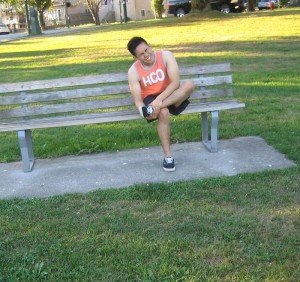Foot tendinitis is often linked to the inflammation of the plantar fascia which is the tendon positioned on the base of the foot. It is important to note that foot tendonitis is typically triggered by overuse and constant movements of certain exercises such as jumping, running or sprinting. As a result, tiny tears in the tendon form which can become inflamed if not allowed to properly heal.
The indications of foot tendinitis include pain or stiffness in the foot when getting out of bed in the morning or when starting an exercise routine. Take note that this pain can reduce during activity once the tendon warmed up, but it typically returns afterward. If determined early, the treatment of foot tendinitis is quite simple.
Rest

It is vital to recognize the activity that causes the foot pain and minimize or eliminate it until the pain is gone. The individual should avoid running or playing while the pain is present since this is likely to make it worse.
Always bear in mind that rest is the ideal way to allow the foot to heal. The individual can stay active but simply select exercises that do not add stress on the foot. If the individual loves to run, it is recommended to try a non-impact activity such as swimming instead.
Application of ice
Applying cold over the affected area can help minimize the pain and inflammation. You have to wrap a thin towel or clean cloth around an ice pack or bag of frozen vegetables and apply over the heel and base of the foot at 3-4 times in a day for 10-15 minutes at a time. Avoid applying the ice pack directly over the skin since this can lead to frostbite. In addition, you can perform an ice massage directly over the foot and heel.
Anti-inflammatory medications
As long as prescribed by the doctor, a non-steroidal anti-inflammatory drug (NSAIDs) can be given such as ibuprofen to help manage the swelling if the plantar fascia is swollen or inflamed.
Proper stretching
Once the pain subsides, you have to gently stretch out the foot, ankle and calf at 3-4 times a day. It is vital to focus on stretching the Achilles tendon and plantar fascia. It is recommended to utilize stretches such as heel raises and calf wall stretches on stretching the plantar fascia. The tight muscles and tendons can instigate inflammation and add more strain on the affected foot.
Massage
Sports massage can help relieve the pain caused by foot tendinitis. Any adhesions and scar tissues that caused tightness can be broken up.
Medical treatment for foot tendinitis
Physical therapy is often utilized to manage the source of the issue. Massage, stretching and ultrasound therapy can help reduce the inflammation, stimulate healing of the tears in the tendon as well as increase the flow of blood. Other treatment options include shock wave therapy, cortisone shots or surgery.
